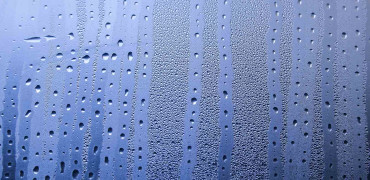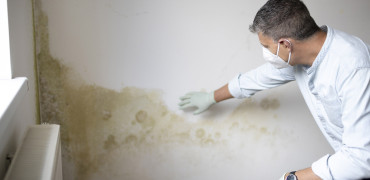As a society we are spending more and more of our time indoors, but did you know that this could actually be more harmful than it seems.
When considering how most people spend their time, it is clear to see that, as a society, most of us favour the indoors over the outdoors.
We consider our homes to be protected places; they are where we eat, sleep, relax and it is even the place we consider our children to be most safe.
Since the pandemic, for many of us home has also now become a place to work, with fifty of the UK’s biggest employers stating that they have no plans to return all staff to the office full-time.
As our homes are such important places in our lives, we can no longer afford to ignore the growing issue of the potential harm from poor indoor air quality.
In our moist climate, damp and mould can also be a major problem if ventilation is poor
Why is indoor air quality so important?
Indoor air quality (IAQ) focuses specifically the air inside buildings as well as in the immediate surrounding areas.
Being aware of indoor air pollutants in our homes has now become a necessity, especially when so many of the tasks we do, day in and day out, could actually be releasing harmful elements, known as volatile organic compounds (VOC’s).
Dry cleaned clothes, perfume, cleaning products, deodorant, paints (even once dried) and even the glue used in furniture could be releasing these compounds and reducing the quality of the air around us without us knowing.
In the UK’s moist and temperate climate, damp and mould can also be a major problem if ventilation is poor and this can also degrade the indoor air. Mould inside our homes can lead to serious health issues.
Currently, indoor air quality can be more than 3 – 5 times worse than outdoor air, yet outdoor pollution receives much more attention. Yet when you stop and consider the fact that the air we breathe travels all around our bodies, this can quickly become a serious health and safety issue.
How to identify poor indoor air quality
So, what are the signs that may indicate poor indoor air quality which you can look out for?
Examples include (but are not limited to) noticing unpleasant odours, including dampness seeing a buildup of dust or visible mould, finding evidence of humidity and newly emerging allergy symptoms.
Without proper testing, you will not be able to understand the extent of the issue, but noticing the signs may allow you to recognise the issue and begin making efforts to improve it sooner rather than later.
If you are a landlord or are considering renting out your property to tenants in the future, ensuring good IAQ is essential, as shown in regulatory documents such as: Approved Document F: Volume 1 applies to dwellings (publishing.service.gov.uk).
A good place to start to learn more about Indoor Air Quality, is with the BESA ‘Beginner’s guide to IAQ’
How to improve your home’s air quality
Whilst poor indoor air quality has a negative effect on your health, clean air can have the opposite effect, leading to improved wellbeing and therefore reduced pressure on both you and the NHS.
Before you can take the steps towards improved air in your home, you will first need to conduct testing to establish what the problem is.
This could involve you using an indoor air quality monitor, or you can hire a professional to conduct more advanced and thorough testing for more accurate results.
Before this though, there are a range of small and inexpensive things which you can do which will quickly allow you to make small improvement to the air quality in your home, which includes:
- Making sure you are properly ventilating your home
- Keeping indoors smoke-free
- Removing or limiting excess moisture
- Using chemical-free and allergy-safe products
- Keeping your home’s temperature stable
BESA has also produced the BASH Guide (Buildings As Safe Havens) which includes step-by-step guidance and the questions to ask any ventilation supplier.
What is MVHR?
Depending on the outcome of your IAQ testing, you may wish to take a more robust approach towards cleaning the air within your house.
Mechanical Ventilation with Heat Recovery (MVHR) is a straightforward way of removing stale, indoor air and replacing it with fresh outdoor air. The heat recovery part helps to minimise energy use as up to 90% of the heat energy from the outgoing air can be recovered to heat up the cool, outdoor air.
Our residential range of Lossnay MVHR units offer a ventilation solution which will provide a constant environment of clean air inside your home. These can be fitted individually, room by room, through an outdoor wall, or in the form of a whole house solution.
These Lossnay units recover both temperature (sensible heat) and moisture (latent heat), as well as filter out dust, pollutants and allergens to ensure a comfortable and safe environment in which you can live, work and rest in safely.
Find out more about the Lossnay residential MVHR systems here.
What costs are associated?
As mentioned above, there are some low-cost ways you can improve the air quality in your home which can help you make a difference almost immediately.
The cost of improving the heating and ventilation in your home will depend on a number of different factors such as the type of product or solution you choose, the space and location available, and the installation process.
However, on top of the benefits for your own health and wellbeing, there are a range of cost-benefits to the solutions mentioned above, with the units in the residential Lossnay range using heat recovery energy to reduce the energy needed to keep your home at a comfortable temperature.
If you are ready to begin the process of improving your home’s indoor air quality, why not find an installer today.
Ellie James is Apprentice Content Provider at Mitsubishi Electric




